

SCHEDULE "A"
GENERAL DESCRIPTION OF THE
INTERFERENCE DISC GENERATOR
The Interference Disc electrical generator is made of a stator (114) consisting of an array of even number parallel mounted bar magnets (112) arranged and supported (114) in a circular fashion equidistant from each other, where the polarity of the magnets (112) are alternating when viewed at either end.
Also in the stator (102) there are twice the number of coils (111) as bar magnets (112) wound in pairs on U-shaped cores (110). One half of the coil pairs mounted at one end of the bar magnets (112) in the same circular fashion, each corresponding to and aligned opposite to a pair of bar magnets (112) and separated from it by an air gap. On the other end of this pair of bar magnets (112) there are another set of coils (111) aligned likewise.
*The rotor is made of two magnetically susceptible circular plates (109A or 109B) (such as iron or steel) centrally mounted on an axle (107) which is in respect to the array of magnets and coils.
The interference discs (109A or 109B) are separated from each other such that they can rotate in the air gaps between the magnets (112) and the coils (111). The interference discs (109A or 109B) have a number of equidistant opening, either more or less in number than the number of the bar magnets (112).
.
The arrangement and size of the openings are such that when the discs (109A or 109B) are rotated by an outside motive force, they open the magnetic field between adjacent bar magnets (112), and the opposing coils (111) at both ends of the stator (114) simultaneously, hence inducing an alternating electric current in the coils (111).
By opening and closing the magnetic influx to the core (110) of the coils (111), an alternating current will be generated in the coils (111) in a retro-order to the rotational direction of the interference discs (109A or 109B). Depending on the number of magnet-coil assemblies three phase AC current can be obtained. The regulation and attenuation of these currents can be achieved by known electric engineering methods.
OPTION I AND OPTION II ASSEMBLIES
.A variation of this option I or option II generator has been constructed by mounting two sets of magnets (113) of the stator (115) on magnetically susceptible rings (119) such as soft iron. The polarity of the neighboring magnets (113) are alternating N, S, N, S, etc.
Adjacent to one ring of the magnets and separated by an air gap are parallel mounted induction coils (111A) corresponding to and aligned with the magnets (113). On the other end of the coils, (111A) are an identical set of magnets (113) arranged in the same manner as the first set, but the polarity is reversed in respect to the coil (111A). Thus if on one of the end plates (123) the magnetic pole facing the coil (111A) is the (N) pole than on the opposite end plate (123A) the (S) pole will face the coil (111A).
The rotor (109A or 109B) and itís configuration is the same as in the first variant (see*), and the induction of AC current, occurring in the same manner and in the same order as described before. This assembly can be constructed in any practical multiple units of the above (123A).
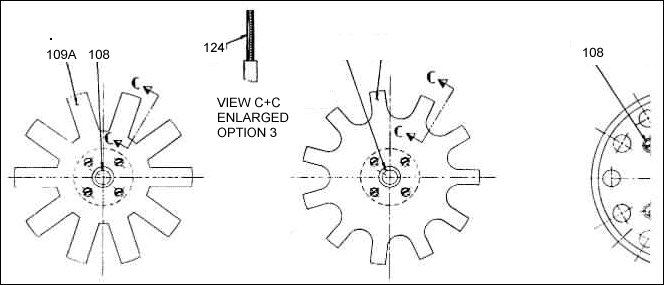
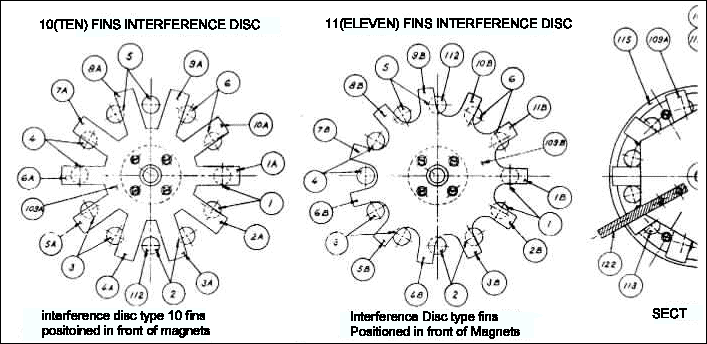
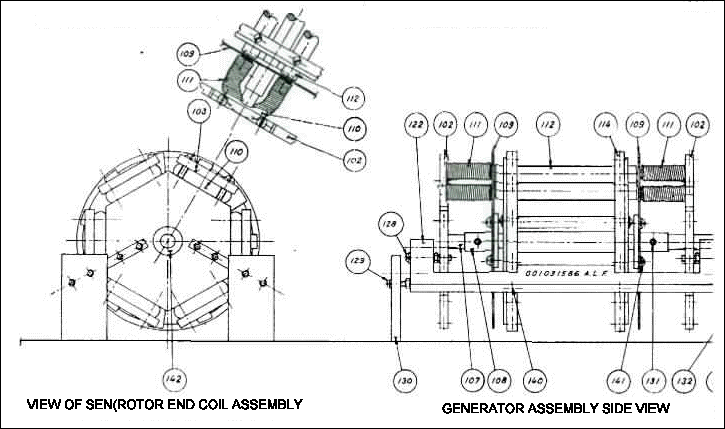
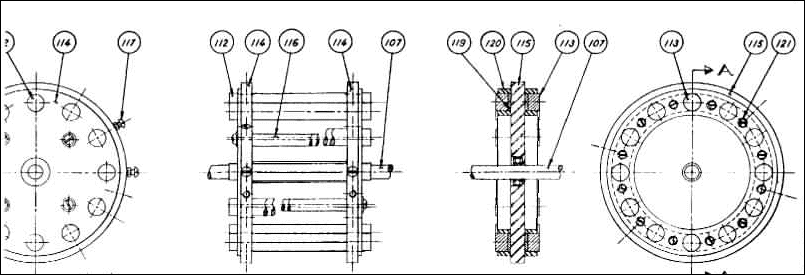
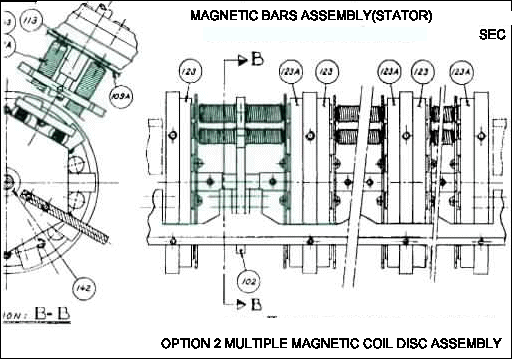
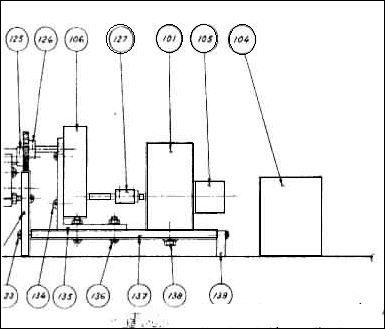
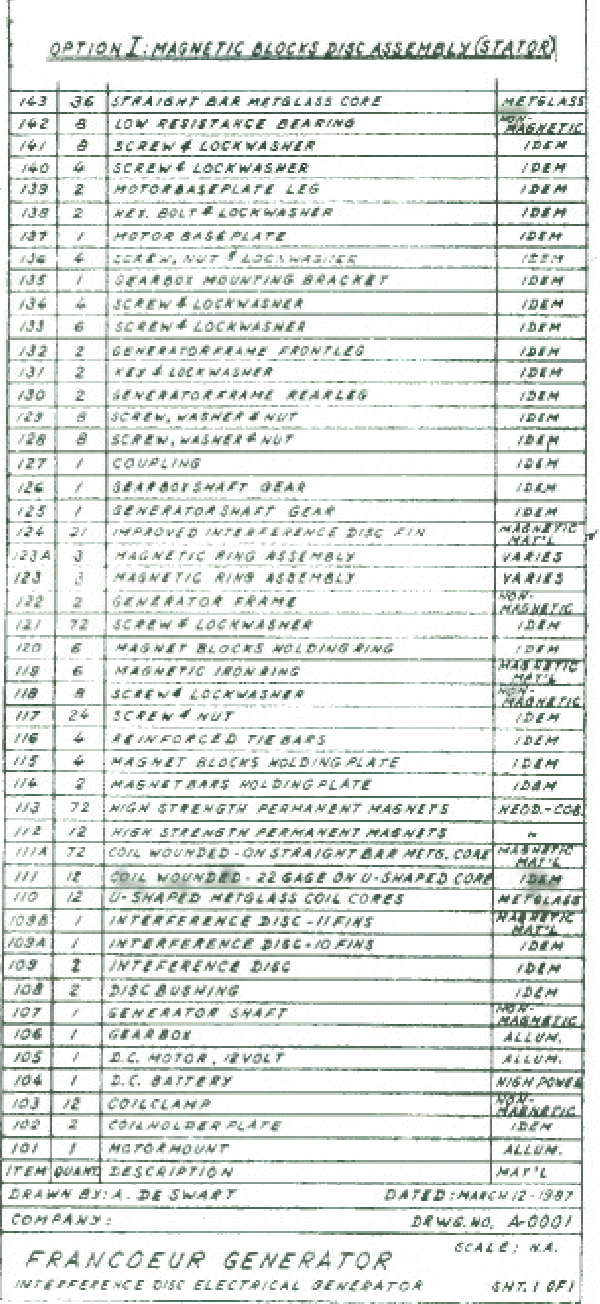
Research/Inventor
Penticton, BC. Canada
